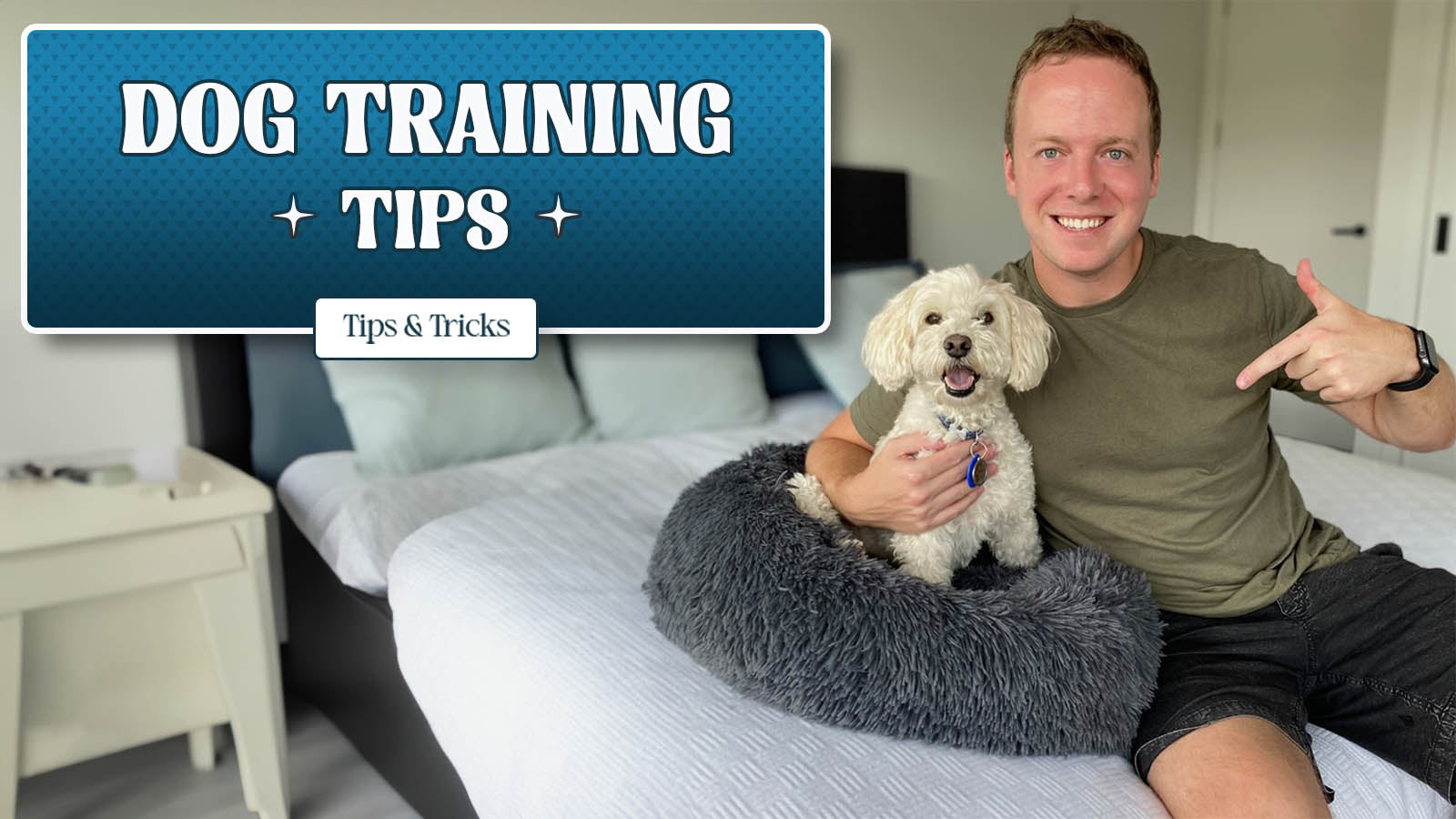Teaching your dog tricks is more than just fun and games. It’s a wonderful way to strengthen the bond between you and your furry friend. By engaging in positive, interactive training sessions, you not only provide mental stimulation for your pet but also foster trust and communication.
Learning tricks enhances a puppy’s problem-solving skills and boosts their confidence, especially when you compliment and reward them. It makes them happier and better-behaved companions.
It’s also a chance to create core memories together, reinforcing the unconditional love you have for each other. It is time well spent, investing in the relationship.

Establishing Clear Communication
When training your dog, there are some ways you need to communicate for clarity and consistency.
- Give training commands once. If you repeat yourself while training your dog, perhaps saying the command 3 times, they will get into the habit of waiting until you’ve commanded them 3 times to act.
- Consistent Marker Signal. You can use hand signals or a clicker. Clickers are good in that they are an audible marker, and you can tell if a dog is aware through the twitching of their ears.
- Body Language. Dogs are experts at reading body language, facial expressions and gestures. Use open and positive body language when training. This helps enforce a sense of calm and trust.
- Pairing cues. Voice and hand gestures, when combined, can reinforce commands and training requests. Taken a step further, your dog may learn commands purely from gestures and body language.
- Clear words. Establish clear-sounding words for commands. Go, and Hold can sound similar and may confuse a dog.

Start With Basic Commands
As with all teaching, starting simple is the way to go. Not only does this teach your dog some basic tricks, but it also opens the way for more complicated commands. If they understand that you are trying to teach them something, they’ll be more open to learning.
Some of the basic commands you can teach your dog include “sit”, “stay”, “come”, “down”, and “no”.
Make sure your communication is clear and you annunciate your commands. Have your consistency marker and your positive body language in play so the dog understands that they’re not being punished, but they’re being educated.

Positive Reinforcement Techniques
It is essential that you use positive reinforcement when training your dog. You want to reward them for doing a good job, and they want to know they’ve done the right thing.
Many dogs are food-motivated. If they can nail a trick and get a treat, they potentially could learn faster.
A treat should be something small and different to what you normally feed your dog. It shouldn’t be so big that after a few, they’re full, although when have you known a dog to be full?
Keep a variety of different treats available so they don’t get bored of the same treat each time.
Couple the treat with positive reinforcement. Give your dog a good scritch, and verbally praise them as well. Do this first, and then feed them the treat.
When you first start training your dog, rewarding them with a treat each time they succeed is fine. Once your pet has learnt a trick, cut down on the rewards for that trick.
What will happen is your dog will figure out that if they keep doing the trick when you ask, eventually they will get a treat, rather than every time.
If you reward them every time, then that is what the dog will expect. You may even find the dog doing tricks on their own and then wanting treats.

Patience and Consistency
Training a young puppy can be frustrating. They want to play. They might get excited and want to bark. They most certainly won't understand you when you begin.
They won’t understand you, they’re in an exciting new environment with wonderful smells and sounds and you!
Don’t be afraid to take a break. If it is frustrating you, take a breath. Your body language will change, you may get angry, and this will have a negative impact on your puppy.
Alternatively, if they start to really misbehave, then giving them time out in their crate may be a good idea.
Also, do some research on your breed’s behaviour. Some breeds take well to training, while others not so well.

Incorporating Toys
Dog toys can be both a positive influence on training or a negative one.
If your dog is not very motivated by treats but loves a good game of fetch or tug of war, then a dog toy can be the positive reinforcement item of your training schedule.
Also, if you’re training them to DROP, then a toy is the perfect thing to use.
However, if a dog likes to play more than they want to train, the toy can end up being a distraction rather than a helping hand. Keep the toy reward session quick to a few seconds at most.
Toys can help with more than just training for commands.
- Congs stuffed with food can help them develop problem-solving skills.
- Tug-of-war toys can help with strength training.
- Fetch toys can help with fitness and agility.

Celebrating Achievements
Always celebrate achievements with your dog. Positive body language and a happy smile, with positive voice commands- good dog, good girl, well done. Jump around and play with them. Get them happy and active when they’ve learned a trick.
This helps associate good times when they learn a trick or obey your command to do a trick.
A big celebration should not happen every time, only when they’ve mastered a trick. This helps them associate such a celebration with completing that trick and obeying that command.
If you have questions or comments you want to add about training your dog, success stories or even cute videos, you can drop us a line and share your wins. We’re pet lovers too!

